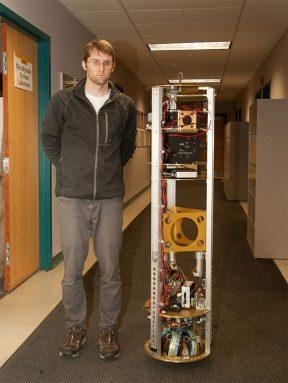SIMbot Uses A Spherical Induction Motor And Magnetic Currents To Get Around
Professor Ralph Hollis invented a robot with a special motor that has a very simple drive system about a decade ago called the ballbot. Fast-forward ten years and Hollis' invention called the spherical induction motor (SIM) has been improved in a new robot called the SIMbot that has eliminated the mechanical drive system used on previous ballbots.
This elimination means that the SIMbot is simpler and has less required routine maintenance making the bot less likely to fail. The new motor used in SIMbot can move the robot in any direction using electronic controls. The movements keep the SIMbot's tall body balanced atop the ball.

SIMbot has been compared to a mechanically driven ballbot and the tests show that SIMbot can more at a similar speed of about 1.9 meters per second. That is the same speed as a very fast walk for humans. The big difference is that the SIMbot isn't as efficient as the ballbot at this time. The induction motor used in the SIMbot has a spherical rotor and advanced software that allows it to move in any combination of three axes for omni-directional capability.
This new motor design allows the ball to turn all the way around rather than being limited to only a few degrees of movement. Ballbots are ideally suited for working with people according to Hollis because they are tall as a human, can fit easily through doors, and can be pushed out of the way if needed. This sort of robot can be used to help people get out of a chair, carry packages, or to guide a person. Older ballbots used a system of belts to move the ball, but the new solid-state system will eliminate any need to replace the rollers and belts making them easier to maintain and operate.
The solid-state motors use a hollow iron ball coated in copper. A current is induced in the ball via six laminated steel stators positioned precisely next to the ball. Those stators generate a magnetic wave and the ball moves in the direction of the magnetic wave taking the robot with it and allowing precise steering by alternating the magnetic waves.
SOURCE: CS.cmu.edu
